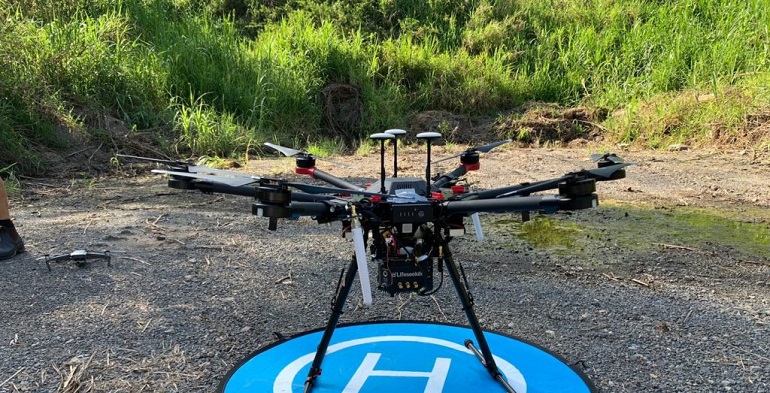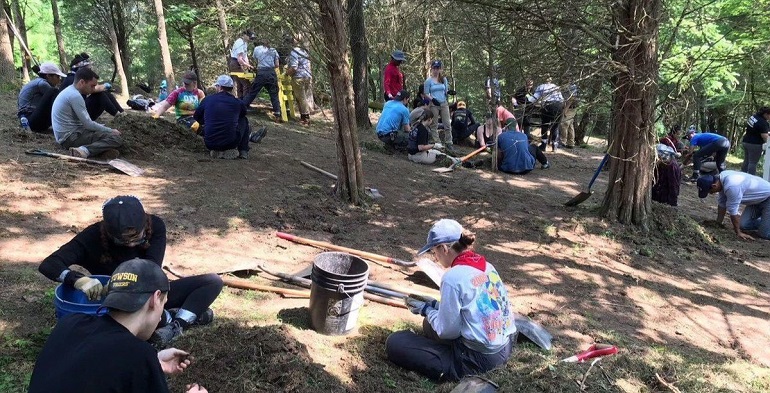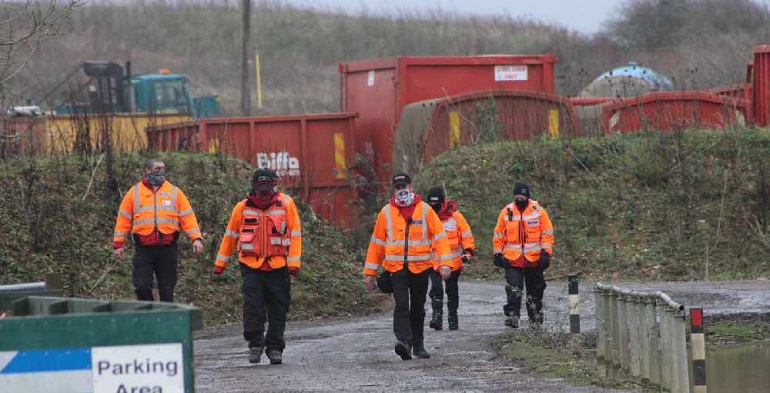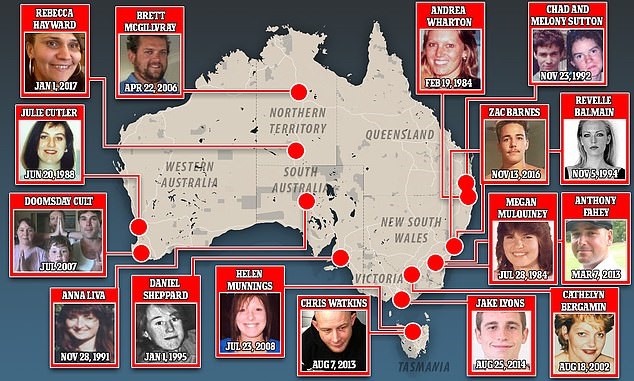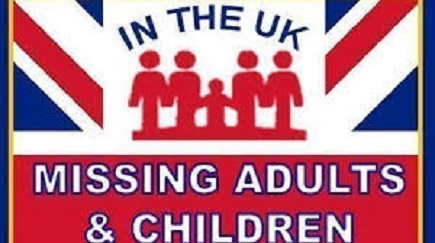Missing
Kynande Kalehje Bennett





Kynande, approximately 2002; Age when reported missing: 11 (approximately 2009); Vartasha McCullough; Kevin Bennett
Date and time person was reported missing : 09/29/2002
Missing location (approx) :
Whiteville, North Carolina
Missing classification : Endangered Missing
Gender : Female
Ethnicity :
Black
DOB : 08/24/1998 (22)
Age at the time of disappearance: 4 years old
Height / Weight : 3'10, 90 pounds
Description, clothing, jewerly and more : A gray FUBU t-shirt, blue jeans, white socks and black sneakers.
Distinguishing characteristics, birthmarks, tattoos
: African-American female. Brown hair, brown eyes. Kynande has a light complexion, pierced ears, and a birthmark on her arm in the shape of a seashell. When she was last seen, her hair was styled in small braids tied with small bows and/or barrettes. Kynande's name is pronounced "kee-NAHN-day."
Information on the case from local sources, may or may not be correct : Kynande's mother, Vartasha McCullough (sometimes referred to as Vartasha White or Vartasha McCullough White) said she last saw her daughter at a K-Mart store at 5:00 p.m. on September 29, 2002. They resided in Conway, South Carolina and were visiting Kynande's uncle in Whiteville, North Carolina that day. At first, Vartasha claimed Kynande disappeared in an aisle of the store, but she later changed her story and said she walked into the store and thought Kynande was behind her, but turned around and the child was gone.
Nobody remembered seeing the child with her mother in K-Mart that day, and video surveillance imAge at the time of disappearance: s of the establishment did not show any imAge at the time of disappearance: s of Kynande. When the police searched the couple's car, they noted there was no car seat and no other sign that a young child had been there recently, except for a single matchbox car they found wedged under a seat. In fact, investigators could find no evidence that Kynande had ever arrived in North Carolina. No one at all, other than Kynande's father and mother, reported having seen her in the two days before she was reported missing.
One witness saw Kynande with bruises on her shoulder and face just a few days before her disappearance, and when the witness asked the child what had happened, Kynande said, "My mommy did it." The witness then confronted Vartasha, who said, "I'm going to whip her ass for telling you." Another witness reported seeing cuts on Kynande's body, and marks that appeared to have been caused by a strap. Kynande's grandparents had been worried about her and on September 29, the same day the child was reported missing, her grandparents told the police in Kynande's hometown of Conway that they thought Kynande was being abused.
Police stated Kynande's parents seemed uninterested in her case and never called to ask for updates on the investigation. They also reported that Vartasha failed a polygraph regarding her daughter's disappearance and Kynande's father, Eddie "Kevin" Bennett Jr., refused to talk one. Both parents were described as uncooperative and there were inconsistencies in their stories. Photos of Vartasha and Kevin are posted with his case summary.
Police executed a search warrant on Kynande's home and her family's vehicles, and took blood and saliva samples from both parents. They later stated that the residence had been "sanitized" with bleach and still smelled of it. They noted the presence of three bleach bottles, a damp mop and towels. Vartasha stated she was cleaning the apartment in preparation for an upcoming inspection by the Housing Authority, but investigators believe she was trying to come up a crime.
The search of the apartment turned up transfer stains, which come from fluid spatters being wiped, matching Kynande's DNA, and police said the scene "would suggest that a physical assault had taken place." They also noticed that someone had already thrown away most of Kynande's toys and clothes, as if they did not believe she would ever be coming home. Vartasha and Kevin used the past tense when talking about Kynande, an indication they believed she was no longer alive.
According to authorities, after they told Vartasha she had failed her polygraph, she began crying. One of the officers said, "We both know that whatever happened to that child did not happen in North Carolina, it happened in that apartment, didn’t it?" and Vartasha nodded yes. They asked her to take them to where Kynande's body was, but she said, "I can't." After she regained her composure, she retracted her previous admission and again said Kynande had disappeared from the K-Mart.
Kynande's parents were both arrested in February 2003 and charged with homicide by child abuse in connection with their daughter's case. Investigators said the DNA evidence proved she died in Conway and never went to Whiteville on September 29. That, combined with Kynande's grandparents' evidence, led to the murder charges. The charges against Kevin were dropped in October 2005, but could be refiled if more evidence is located. Additional charges of unlawful neglect of a child and inflicting great bodily harm on a child were added to Vartasha's indictment in December 2005.
Vartasha maintained her innocence at the trial and testified in her own defense, stating she never harmed Kynande. The prosecution theorized McCullough had abused Vartasha and caused her death unintentionally, then panicked afterwards and attempted to conceal the crime. She was convicted of all charges in February 2006 and sentenced to twenty years in prison.
Kynande remains missing. She is described as an intelligent, well-mannered child who could read simple words and count to thirty at the time of her disappearance. She liked the cartoon character Spongebob Squarepants. Foul play is suspected in her case due to the circumstances involved.
Other information and links : ncy
Indiana State Police
800-382-7537
September 2021 updates and sources
Missing Children�s Statistics
One Missing Child Is One Too Many
The lack of a common definition of �missing child,� and a common response to the issue, results in few reliable statistics on the scope of the problem around the world.
Even with this challenge, we know that:
In Australia, an estimated 20,000 children are reported missing every year.
Australian Federal Police, National Coordination Centre.
In Canada, an estimated 45,288 children are reported missing each year.
Government of Canada, Canada�s Missing � 2015 Fast Fact Sheet.
In Germany, an estimated 100,000 children are reported missing each year.
Initiative Vermisste Kinder.
In India, an estimated 96,000 children go missing each year.
Bachpan Bachao Andolan, Missing Children of India.
In Jamaica, an estimated 1,984 children were reporting missing in 2015.
Jamaica�s Office of Children�s Registry
In Russia, an estimated 45,000 children were reported missing in 2015.
Interview with Pavel Astakhov MIA �Russia Today�, Apr. 4, 2016.
In Spain, an estimated 20,000 children are reported missing every year.
Spain Joins EU Hotline for Missing Children, Sep. 22, 2010.
In the United Kingdom, an estimated 112,853 children are reported missing every year.
National Crime Agency, UK Missing Persons Bureau.
In the United States, an estimated 460,000 children are reported missing every year.
Federal Bureau of Investigation, Missing Children�s Statistics
One Missing Child Is One Too Many
The lack of a common definition of �missing child,� and a common response to the issue, results in few reliable statistics on the scope of the problem around the world.
Even with this challenge, we know that:
In Australia, an estimated 20,000 children are reported missing every year.
Australian Federal Police, National Coordination Centre.
In Canada, an estimated 45,288 children are reported missing each year.
Government of Canada, Canada�s Missing � 2015 Fast Fact Sheet.
In Germany, an estimated 100,000 children are reported missing each year.
Initiative Vermisste Kinder.
In India, an estimated 96,000 children go missing each year.
Bachpan Bachao Andolan, Missing Children of India.
In Jamaica, an estimated 1,984 children were reporting missing in 2015.
Jamaica�s Office of Children�s Registry
In Russia, an estimated 45,000 children were reported missing in 2015.
Interview with Pavel Astakhov MIA �Russia Today�, Apr. 4, 2016.
In Spain, an estimated 20,000 children are reported missing every year.
Spain Joins EU Hotline for Missing Children, Sep. 22, 2010.
In the United Kingdom, an estimated 112,853 children are reported missing every year.
National Crime Agency, UK Missing Persons Bureau.
In the United States, an estimated 460,000 children are reported missing every year.
Federal Bureau of Investigation, NCIC.
This, however, is only a snapshot of the problem. In many countries, statistics on missing children are not even available; and, unfortunately, even available statistics may be inaccurate due to: under-reporting/under-recognition; inflation; incorrect database entry of case information; and deletion of records once a case is closed.
The lack of numbers, and the discrepancy in the numbers that do exist, is one of the key reasons why ICMEC developed and advocates for the Model Missing Child Framework, which assists countries with building strong, well-rounded national responses, and facilitates more efficient investigations, management, and resolution of missing children cases.
We firmly believe that one missing child is one too many, and we are committed to improving the global understanding of and response to missing and abducted children.
Here is a look at missing children in the United States. There are several different types of missing children: runaways, family abductions, lost or �thrown away� and non-family abductions. Advances in technology, communications through public alerts and greater cooperation from law enforcement have facilitated the recovery process.
Statistics
According to the FBI�s National Crime Information Center (NCIC) Missing Person File, there are 89,637 active missing person records, of which juveniles under the age of 18 account for 30,396 (34%) of the records. (as of December 31, 2020)
AMBER Alert
�AMBER (America�s Missing: Broadcast Emergency Response) Alerts are emergency messages broadcast when a law enforcement agency determines that a child has been abducted and is in imminent danger. The broadcasts include information about the child and the abductor, including physical descriptions as well as information about the abductor�s vehicle - which could lead to the child�s recovery.�
The AMBER Alert system began in 1996 and was named in honor of Amber Hagerman, a 9-year-old who was abducted in Arlington, Texas, and murdered.
All 50 states, the District of Columbia, Puerto Rico, and the US Virgin Islands have AMBER Alert plans in place to help find missing children in danger.
As of December 2020, the AMBER Alert program has been credited with the safe recovery of 1029 children..
This, however, is only a snapshot of the problem. In many countries, statistics on missing children are not even available; and, unfortunately, even available statistics may be inaccurate due to: under-reporting/under-recognition; inflation; incorrect database entry of case information; and deletion of records once a case is closed.
The lack of numbers, and the discrepancy in the numbers that do exist, is one of the key reasons why ICMEC developed and advocates for the Model Missing Child Framework, which assists countries with building strong, well-rounded national responses, and facilitates more efficient investigations, management, and resolution of missing children cases.
We firmly believe that one missing child is one too many, and we are committed to improving the global understanding of and response to missing and abducted children.
Here is a look at missing children in the United States. There are several different types of missing children: runaways, family abductions, lost or �thrown away� and non-family abductions. Advances in technology, communications through public alerts and greater cooperation from law enforcement have facilitated the recovery process.
Statistics
According to the FBI�s National Crime Information Center (Missing Children�s Statistics
One Missing Child Is One Too Many
The lack of a common definition of �missing child,� and a common response to the issue, results in few reliable statistics on the scope of the problem around the world.
Even with this challenge, we know that:
In Australia, an estimated 20,000 children are reported missing every year.
Australian Federal Police, National Coordination Centre.
In Canada, an estimated 45,288 children are reported missing each year.
Government of Canada, Canada�s Missing � 2015 Fast Fact Sheet.
In Germany, an estimated 100,000 children are reported missing each year.
Initiative Vermisste Kinder.
In India, an estimated 96,000 children go missing each year.
Bachpan Bachao Andolan, Missing Children of India.
In Jamaica, an estimated 1,984 children were reporting missing in 2015.
Jamaica�s Office of Children�s Registry
In Russia, an estimated 45,000 children were reported missing in 2015.
Interview with Pavel Astakhov MIA �Russia Today�, Apr. 4, 2016.
In Spain, an estimated 20,000 children are reported missing every year.
Spain Joins EU Hotline for Missing Children, Sep. 22, 2010.
In the United Kingdom, an estimated 112,853 children are reported missing every year.
National Crime Agency, UK Missing Persons Bureau.
In the United States, an estimated 460,000 children are reported missing every year.
Federal Bureau of Investigation, NCIC.
This, however, is only a snapshot of the problem. In many countries, statistics on missing children are not even available; and, unfortunately, even available statistics may be inaccurate due to: under-reporting/under-recognition; inflation; incorrect database entry of case information; and deletion of records once a case is closed.
The lack of numbers, and the discrepancy in the numbers that do exist, is one of the key reasons why ICMEC developed and advocates for the Model Missing Child Framework, which assists countries with building strong, well-rounded national responses, and facilitates more efficient investigations, management, and resolution of missing children cases.
We firmly believe that one missing child is one too many, and we are committed to improving the global understanding of and response to missing and abducted children.
Here is a look at missing children in the United States. There are several different types of missing children: runaways, family abductions, lost or �thrown away� and non-family abductions. Advances in technology, communications through public alerts and greater cooperation from law enforcement have facilitated the recovery process.
Statistics
According to the FBI�s National Crime Information Center (NCIC) Missing Person File, there are 89,637 active missing person records, of which juveniles under the age of 18 account for 30,396 (34%) of the records. (as of December 31, 2020)
AMBER Alert
�AMBER (America�s Missing: Broadcast Emergency Response) Alerts are emergency messages broadcast when a law enforcement agency determines that a child has been abducted and is in imminent danger. The broadcasts include information about the child and the abductor, including physical descriptions as well as information about the abductor�s vehicle - which could lead to the child�s recovery.�
The AMBER Alert system began in 1996 and was named in honor of Amber Hagerman, a 9-year-old who was abducted in Arlington, Texas, and murdered.
All 50 states, the District of Columbia, Puerto Rico, and the US Virgin Islands have AMBER Alert plans in place to help find missing children in danger.
As of December 2020, the AMBER Alert program has been credited with the safe recovery of 1029 children.) Missing Person File, there are 89,637 active missing person records, of which juveniles under the age of 18 account for 30,396 (34%) of the records. (as of December 31, 2020)
AMBER Alert
�AMBER (America�s Missing: Broadcast Emergency Response) Alerts are emergency messages broadcast when a law enforcement agency determines that a child has been abducted and is in imminent danger. The broadcasts include information about the child and the abductor, including physical descriptions as well as information about the abductor�s vehicle - which could lead to the child�s recovery.�
The AMBER Alert system began in 1996 and was named in honor of Amber Hagerman, a 9-year-old who was abducted in Arlington, Texas, and murdered.
All 50 states, the District of Columbia, Puerto Rico, and the US Virgin Islands have AMBER Alert plans in place to help find missing children in danger.
As of December 2020, the AMBER Alert program has been credited with the safe recovery of 1029 children.
About Crime and Punishment
The Sun News
Interactive Missing Person Search Map



